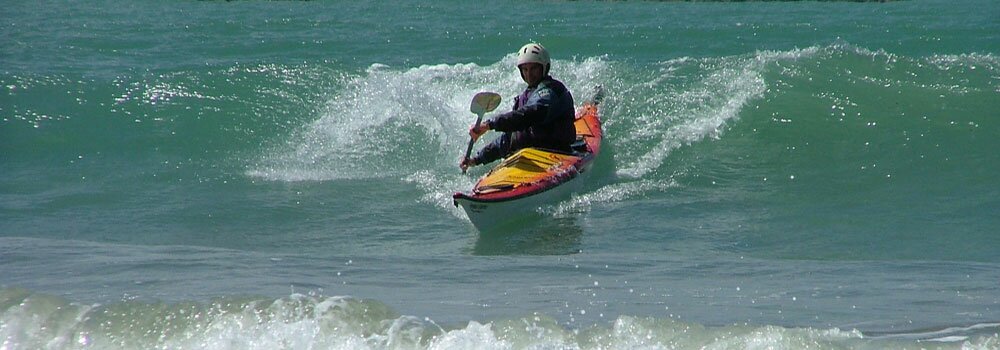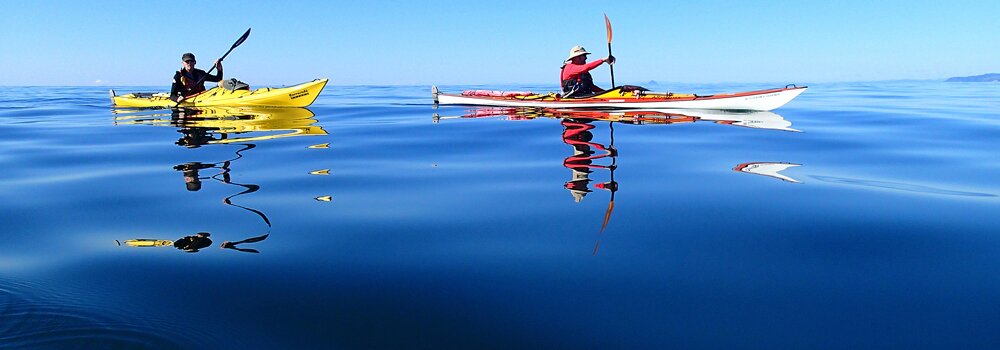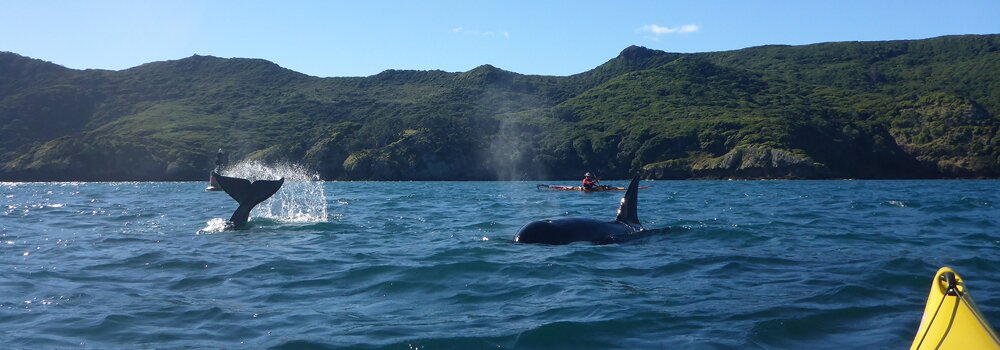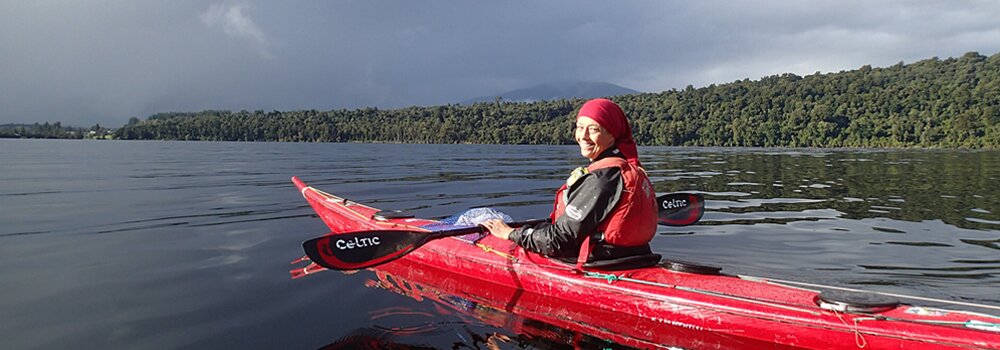Safety
Index
(alphabetical listing)
Emergency Communications - VHF - EPIRB old & new
Emergency Equipment & Marine Equipment Suppliers
H&S - Adventure Activity, Auditing & Clubs' Exemption
Incidents & Accidents Database
KASK Safety Initiatives - Database - Brochure
Mayday and PanPan Call Format Change
Prevention of Collision at Sea
Safety Items - Decklines - Paddle securing straps - Leapfrogging self rescues
Visibility of kayaks and paddle craft - Important Safety Notice - ARC Bylaw
VHF Channels Changed on 1 October 2016Water Safety Champions for 2011 Celebrated - Caffyn
ABC of Safety & Rescues
Experience
A – beginner or simple day paddling
B – done some overnight trips. Know how to do rescues, 2-boat and solo
C – can roll
For all paddlers, weather or bad weather, is the most important item. Of weather, wind is the most critical. Two metre swells on a calm day can be impressive but that is all. Small waves and 30+ knot wind can be challenging or just too much. If gusting as well, that’s when trouble really starts.
Crucial – know your weather.
VHF Channels Changed on 1 October 2016
Changes to the Maritime Mobile Repeater Allocations
New Zealand, along with a number of other countries, are required to change some maritime VHF repeater channels to make space for newly allocated international services for ship tracking and data services.
New Zealand will be moving a few private VHF repeater services, all Coastguard VHF repeater services, and all NowCasting weather services to accommodate these changes.
The frequency changes took place in New Zealand on 1 October 2016, before the peak summer boating season when VHF radio services become busy. This ensures New Zealand is ready for the changes that come into force internationally on
1 January 2017.
No change to emergency distress calling Marine Channel 16
Although some maritime channels will be changing, the existing marine Channel 16 used for safety, distress and calling purposes will not change.
No need to buy a new radio
Your current radio will be able to access all the available channels after the changes take place. However, you may need to switch to a new channel number to continue to access your local repeater or listen to the weather forecast.
New maritime channel numbers
The biggest change you will notice is the new 4 digit maritime channels for the Coastguard and NowCasting weather service. These 4-digit channel numbers are allocated internationally to new maritime channels. New Zealand will be using some of these new 4-digit maritime channels for the Coastguard and privately provided NowCasting weather services.
You will still be able to listen to the weather channels on your current VHF set by simply dropping the first two digits and using the last two digits of the 4-digit channel number. For example, in the Waitemata Harbour where the new weather channel number is 2019, you only need to use channel 19.
The map of Weather Information Channels PDF. This is from the Radio Spectrum Management website and is their given link. However it might not work using Firefox but will download using Chrome. They have been notified.
VHF Channel Changes PDF
H&S – Adventure Activity, Auditing & Clubs Exempt
Regarding clubs and auditing and registration. None of this is required if you are a club, incorporated or non incorporated that does not employ anyone. Note the “not employ”. The applicable section is the one below from Health & Safety in Employment (Adventure Activities) Regulations 2011.
Note these regulations are changing in 2015 so that if a club, not for profit, does employ someone they come under the H&S requirements.
Rescues – how to
Two kayaks and involving one capsize
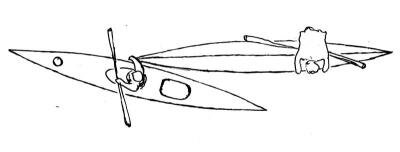
The description below shows how to do the most basic recovery. There are T, X, H rescues, dragging the rescued kayak over your deck, etc. etc.
What is shown here is a BASIC method. Something anyone can do even without practising it though practise is definitely encouraged.
Important – the less time anyone is in the water the better. It is common for those who capsize not to be dressed for immersion.
Important – once the person is back in their kayak you have only done half the job. You now need to get them away from what caused the capsize in the first place. This is in the second section but is just as important.
You are paddling along and your companion capsizes.
Sea Kayaking Incidents and Accidents
Incident Article
An article about Sea Kayaking Incidents 1992 – 2005 by Iona Bailey is available from the WMS website.
WEM Journal article
NOTE: References 7, 10 and 11 do not exist.
This link should be used for the incident severity scale – Severity Scale
Incident Database
As with any accidents, only by publicizing the event and analysing what happened, can lessons be learned.
The KASK Incidents 1974-2016 170421 is here for kayakers to read and hopefully learn from it.
Note the 6 digit number. This is the edit number for tracking edits and corrections. Year, month, day.
Water Safety Champions for 2011 Celebrated
On Thursday, 24 November, at a Gala Dinner held at Te Papa in Wellington, the Sealord New Zealand Water Safety Awards for 2011 were presented. The awards and the dinner ceremony were one of the highlights of Water Our Fatal Attraction: The New Zealand Water Safety Conference 2011.
Outstanding Contribution Winner 2011
Paul Caffyn, Kiwi Association of Sea Kayakers
Change to the Mayday and PanPan call format

The format of verbally transmitted marine radio distress and urgency calls has changed.
To align with the current ITU format (to which we are now requested by RCCNZ/MNZ to teach and assess) we need to teach the following:
Distress Call
the distress signal “MAYDAY” (spoken three times)
the words “THIS IS” (spoken once)
the identity (name) of the vessel in distress (spoken three times) and the call sign (spoken once)
Followed by the Distress Message (which remains unchanged and can follow the mnemonic ‘MIPNANOO’)
the distress signal “MAYDAY” (spoken once)
the identity (name) of the vessel in distress (spoken once) and the call sign (spoken once)
the position
the nature of the distress
the kind of assistance required
the number of people aboard
any other useful information
the word “Over”
The mnemonic MIPNANOO is used for teaching – to help people remember the correct order, standing for Mayday, Identity, Position, Nature of distress, Assistance required, Number of POB, Other info & Over.
The format of the Urgency Call has also changed to be consistent, with the identity (name) of the vessel (spoken three times) and the call sign (only spoken once). The reasoning behind the change is to simplify and reduce the time it takes to transmit a distress call.
Weather Forecasts
MetService supports Safe Boating Week and give pointers to better understanding the reports.
Understanding Sea Conditions From Marine Forecasts
For more information and app download links, check out the MetService website for Weather on Your Mobile Smartphone
VHF
WARNING – repeater frequencies have been re-allocated
See above for VHF channel changes in 2016.
Forecasts are available from a number of sources. This is a warning, make sure the forecast you are listening to is for the day you think it is for and for the area that you are actually interested in. (Still a current warning 2012.)
The forecast from the National radio stations are very poorly presented at times and can lead a listener to confusion.
The spoken forecast should be as boring as possible and should be to a set format – Place, Time, Event, repeat for next area or day – Place, Time, Event, repeat… Unfortunately they don’t do that. So what do they do, they give the event, then the day and possibly where then jump back to the day before for part of the group of places they are talking about until you completely lose the plot. If it is important, write it down and sort out what it means later.
Forecasts from the Coastguard can be relatively old. At the worst, for a couple of days previously! Always check. If the forecast is for the present day, it doesn’t mean the tide data presented is also for the same day as well.
iPhone/Smartphone weather data – it is written by someone. Be warned typos such as 29 degrees instead of 19 degrees can occur. Check it carefully.
TV weather, the picture data might indicate NE and the announcer is saying SE.
All these mistakes have been noted which means you need to be aware that these mistakes can happen and don’t believe everything you see and hear.
A Test of Safety Equipment
In 2007 a test was done in Auckland relating to the visibility of kayakers. The report from that test is in this document Kayak Safety Equipment 2007 PDF.
Those participating were Auckland Harbour Office, Environment Waikato, Maritime New Zealand, Coastguard Northern Region and Auckland Canoe Club.
KASK Safety Initiatives
Following a grim 2003/04 paddling summer, with two sea kayakers drowning, another killed in a collision with a power boat and several offshore rescues that were ever so close to joining the fatality statistics, KASK developed two major safety initiatives:
Database of all sea kayaking incidents
This started with a focus on incidents involving death, injury or rescue. First analysis of the database shows that many serious incidents, involving solo paddlers or groups, were caused by paddlers being caught by strong offshore winds. A critical factor in many incidents was the failure to carry any appropriate signalling device for calling in a rescue, such as day/night flares, VHF radio or mobile phone. See Incidents & Accidents Database
Safe Sea Kayaking brochure
KASK identified a need for a safety publication well over a year ago and the above results certainly justified this. The objective was to highlight best safety practices for novice paddlers. With the content and format from KASK, with considerable input from the KASK Committee into this publication. This was also significantly supported by Water Safety New Zealand, with a grant towards the printing of the publication and administrative support.
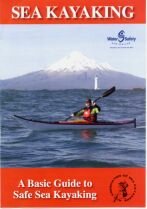 |
A Basic Guide To Safe Sea Kayaking ~ October 2004. Is a six page glossy brochure which promotes safe and enjoyable sea kayaking. It is a free publication. The first two pages detail kayak and equipment terms, what clothing should be worn and what emergency signalling devices should be carried. Two pages list what skills are necessary, both before launching and on the water. The final page advises people not to become a statistic, promotes KASK’s aims, and the 146 page KASK handbook, Manual for Sea Kayaking in New Zealand. Cathye Haddock, author of the Mountain Safety Council, Mountain Safety Manual, Outdoor Safety. Risk Management for Outdoor Leaders, advises this brochure, is now ‘best practice’ for beginning safe sea kayaking in NZ.
|
KASK and Water Safety New Zealand both aim for widespread distribution of this brochure.
- To support it being given with every new sea kayak sold in New Zealand.
- To ensure that it is available to retail outlets.
- To promote it to teaching identities such as polytechs, so that it reaches outdoor students and education outside the classroom, for use as a teaching tool.
Click here to download your FREE Safe Seakayaking Brochure PDF (842 KB).
PLB or EPIRB
Firstly – Andrew McCauley never actuated his beacon. It was tested after his kayak was retrieved and was found to be in working order – but it had never been activated.
Quote: The NZ Coroner noted: “The EPIRB was not activated. Had it been activated the kayak would have been able to be pinpointed and identified within minutes. A helicopter would have been asked to undertake a mission within minutes of receipt of the distress beacon, and been at the location in less than an hour. One can only speculate as to why the beacon was not activated …”
This is mentioned because it’s a major reason for pushing kayakers to use PLBs instead of EPIRBs. Andrew had his EPIRB mounted in his boat – not on his person. EPIRBs get mounted inside kayaks because they are bulky. Andrew never actuated the beacon, even though he put out a call for help on his VHF, and it is fair to conjecture that if he had not become separated from his boat he would have triggered the EPIRB and would probably be alive today.
Emergency Communications
Buying a VHF radio

Most important thing to do –
Having removed your new radio from its box, switch it to the International setup. There are usually the options UIC.
U is for use in the USA
C is for use in Canada
I is for use in the rest of the world, including New Zealand
If you don’t do this, on some channels you will not hear a reply to your call.
EPIRBs Old and New
The “old” EPIRBs will be obsolete by February 2009. Well, yes and no! All EPIRBs transmit on 121.5 MHz, it’s just that the new ones also transmit on 406 MHz as well. An old one will still work though to a limited extent. All aircraft monitor 121.5 MHz and will continue to do so. The frequency, 121.5 MHz, is the one that all craft will use to home in on your position. If you can alert an aircraft directly with the old EPIRB, or using another communications device, call for help, that old EPIRB will still be useful as a homing-signal generator.
If you paddle in conditions and places where the best emergency equipment might be crucial, buy a new 406 MHZ PLB or EPIRB with GPS – See the PLB page.
If you have an old EPIRB and are going to buy a new one, give the old one away to someone who wouldn’t otherwise have or buy one and doesn’t paddle in the “extreme” conditions and places that you do. Otherwise see the PLB page for how to dispose of it.
If you are paddling regularly and want or need to “call home” to keep people up to date with your position or condition and want an emergency call device with GPS tracking, then look at SPOT. It costs $NZ349 and $US150 a year registration fee (check these prices for changes). This is cheaper, if you use its message feature regularly, than a new EPIRB. It has the advantage of pre-programmed “I am OK and this is where I am” messages as well as “I have a problem, tell ‘Fred’ and this is where I am” to “I need help immediately and this is my position”.
Finally and most importantly, two items – water proofness and batteries.
You need to keep your cell phone dry. Cell phone drybags can be bought for as little as $5.00 at places like Mitre10. Your VHF radio might be rated as waterproof but a drybag keeps the stress off the seals and might improve the long term reliability.
It is no good having the best emergency communications device available if the batteries are flat. Check your cell phone and VHF batteries every time you head out paddling. Better still, make it a routine that they go on charge the night before.
Trip Planning
Float Plan
When filled out, this form will give anyone looking for your paddling group, some idea of the area you may be in, expected time away and number in the group. To be left with a contact or on one of the cars in a plastic bag, accessible if needed.
Click here to download a Float Plan PDF (51KB).
Important Safety Notice
ARC Bylaw ~ Visibility of kayaks and paddle craft
Effective from 1 July 2008
Clause 2.17 Auckland Regional Council Navigation Safety Bylaw 2008
1. Every kayak and paddle craft that is navigating in waters beyond 200 metres from shore shall ensure they are highly visible to other vessels. This shall include:
(a) wearing a high visibility vest or high visibility PFD; and
(b) use of reflecting tape on oars or paddles and also on clothing; and
(c) at night, showing a continuous white light visible in all directions from a distance of two nautical miles.
Comments –
(a) Black was found, over 60 years ago, to be the most visible colour in certain lighting conditions!
The bylaw does not state what is considered a high visibility colour.
(b) There are no specifications for size or positioning of the reflective tape!
Radar Reflectors
Refer to this site – Radar Reflectors and Sea Kayak Visibility
Also read the Radar, Reflectors and Sea Kayaks: A Visibility Study PDF (2.5 MB).
Other Safety Items
Decklines
At a recent forum, during rescue practice, it was noticed how many kayaks had decklines fitted that were too tight to be grasped or used for holding on to the rescued kayak. It is better to have lines too loose than too tight. The lines on many models of kayaks are set up tight in the showroom but need to be set up ready for use by the user. They should be loose enough to allow an arm between the line and deck. This will allow a rescuer to thread their arms through a line on each side of the kayak, rest their weight on the deck, thus locking themselves on to the rescued kayak so it cannot capsize in either direction.
Another use is with one arm looped through the deckline by the cockpit while rigging a paddle float. This will keep the paddler in contact with the kayak and still allow the use of both hands.
There are some models of kayaks without any decklines, the older Contours being the worst offenders. A smooth plastic hull is impossible to hold when the paddler is in the water. If bungies are fitted, they are not a secure method of holding on to a kayak.
Paddle securing straps for paddle-float recovery
Paddle securing straps mounted on each side aft of the cockpit for securing the paddle during a paddle-float recovery must be adjusted before leaving the shore. They are not easy to adjust and would cause excessive delays if you try to adjust them at sea while trying to fit the paddle.
Leapfrogging and John Wayne – self rescues
One of the self rescue methods often referred to is the John Wayne method and the implication that cowboys leaped on to their horses over the back. They do if they are the Lone Ranger and Tonto as sometimes seen on a TV commercial in 2004. Note that John Wayne did not play the part of the Lone Ranger and this part was played, for the film and TV versions by Clayton Moore, John Hart and Klinton Spillsbury. The TV series opened with a few bars of the William Tell Overture.
A more descriptive term for the “over-the-stern” recovery would be the Leapfrog.
Of all the recovery methods, it is the least likely to succeed in conditions that made it necessary in the first place.
Long load safety flags
The LTSA and the New Zealand Police Infringement Bureau revised and markedly increased infringement fees pertaining to offences relating to failing to identify an ‘over-dimension’ or ‘projecting’ load.
As of December 2003, and pursuant to section 152 of the Land Transport Act, the New Zealand Police are now actively enforcing this legislation and prosecuting drivers of vehicles who fail to display ‘load flags’ or ‘hazard warning panel/s’ where and when required.
Prevention of Collision at Sea
See Maritime Rules Part 22: Collision Prevention
Maritime Rules
Part 22 Collision Prevention
The rules can be downloaded as a PDF Maritime Rules, Part 22: Collision Prevention (247 KB)
Some (but not necessarily all) items that may effect kayakers –
Part 22 Collision Prevention
Effective 30 July 2009
Useful Kayak Safety Resources
Towing ~ Describes a number of different towing setups. Towing Techniques PDF (765 KB).
Cold water paddling ~ hypothermia, suitable clothing etc. Cold Water Safety PDF (634 KB).
Emergency Equipment & Marine Equipment Suppliers
Emergency Equipment Suppliers
Boatshop (Chch) ~ flares, EPIRBs, marine VHF radios, lights
Burnsco ~ flares, marine VHF radios
Hella Marine ~ flashing lights
RFD ~ EPIRBs and flares
Salcom ~ suppliers of EPIRBs and SPOT
SPOT ~ a position and message transmitter
Marine Equipment Suppliers
Boat Books Auckland ~ Auckland
Canoe & Kayak ~ North Island
Day 2 ~ spraydecks, PFDs and dry gear ~ Rotorua
Ferg’s Kayaks ~ Auckland & Wellington
Hooked on Kayaking ~ fishing kayaks and accessories ~ Taupo
Incept Marine ~ inflatable kayaks ~ Taihape
iPaddle ~ Auckland
Kayak HQ ~ 3 Duncan St, Nelson
Long Cloud Kayaks ~ Christchurch
Long Cloud Kayaks Blog ~ Christchurch
Mission Kayaking ~ now also make Q-kayak kayaks
Outdoor Action Takapuna ~ Takapuna
Paddling Perfection ~ Auckland
Paddler Zone ~ Blenheim Road, Christchurch
Q-Kayaks ~ Ashhurst (see Mission Kayaking)
Rasdex NZ Ltd ~ sprayskirts, PFDs etc. ~ Christchurch
Seventh Wave ~ Christchurch
Watercooled Sports ~ Dunedin
Wetsuit Wearhouse ~ International supplier
